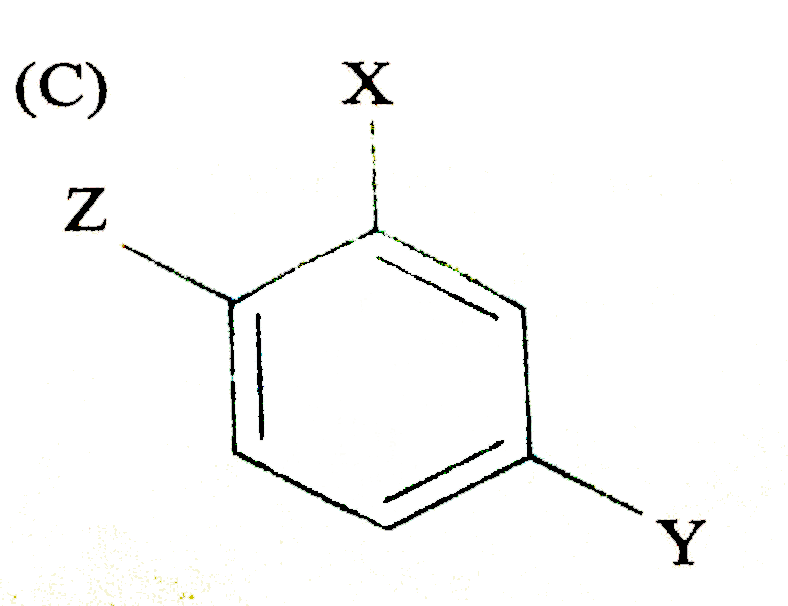Give one example each of o, p - directing group and m - directing group.
To answer the question, we need to provide examples of ortho-para directing groups and meta-directing groups in the context of benzene derivatives. Here’s the step-by-step solution:
Step 1: Understand the Definitions
- Ortho-para directing groups are substituents on a benzene ring that direct incoming electrophiles to the ortho and para positions relative to themselves.
- Meta directing groups direct incoming electrophiles to the meta position relative to themselves.
Step 2: Identify an Example of an Ortho-Para Directing Group
- A common example of an ortho-para directing group is the amino group (–NH2).
- When attached to a benzene ring, the amino group increases the electron density at the ortho and para positions through resonance, making these positions more reactive towards electrophiles.
Step 3: Identify an Example of a Meta Directing Group
- A well-known example of a meta directing group is the nitro group (–NO2).
- The nitro group is electron-withdrawing due to its –I (inductive) and –R (resonance) effects. It decreases the electron density at the ortho and para positions, making the meta position relatively more reactive towards electrophiles.
Summary of Examples
- Ortho-Para Directing Group: Amino group (–NH2)
- Meta Directing Group: Nitro group (–NO2)
- Ortho-para directing groups are substituents on a benzene ring that direct incoming electrophiles to the ortho and para positions relative to themselves.
- Meta directing groups direct incoming electrophiles to the meta position relative to themselves.
- A common example of an ortho-para directing group is the amino group (–NH2).
- When attached to a benzene ring, the amino group increases the electron density at the ortho and para positions through resonance, making these positions more reactive towards electrophiles.
- A well-known example of a meta directing group is the nitro group (–NO2).
- The nitro group is electron-withdrawing due to its –I (inductive) and –R (resonance) effects. It decreases the electron density at the ortho and para positions, making the meta position relatively more reactive towards electrophiles.
- Ortho-Para Directing Group: Amino group (–NH2)
- Meta Directing Group: Nitro group (–NO2)
Topper's Solved these Questions
- HYDROCARBONSBOOK - CBSE COMPLEMENTARY MATERIALCHAPTER - HYDROCARBONSEXERCISE - 2- MARK QUESTION
28 Videos
- HYDROCARBONSBOOK - CBSE COMPLEMENTARY MATERIALCHAPTER - HYDROCARBONSEXERCISE - 3- MARK QUESTION
17 Videos
- HYDROCARBONSBOOK - CBSE COMPLEMENTARY MATERIALCHAPTER - HYDROCARBONSEXERCISE - ONE WORD TYPE QUESTION
10 Videos
- EQUILIBRIUM BOOK - CBSE COMPLEMENTARY MATERIALCHAPTER - EQUILIBRIUM EXERCISE - UNIT TEST
6 Videos
- HYDROGENBOOK - CBSE COMPLEMENTARY MATERIALCHAPTER - HYDROGENEXERCISE - Unit Test
11 Videos
Similar Questions
Knowledge Check
o,p-directing group are mostly :
AActivation groupBDeactivating groupsCNeutral groupsDNone of theseWhich of the following groups are m−directing :
A−CHOB−OHC-OCOCH_(3)D−COOHThe compound
 (where X is an O,P-directing group and Y is m-directing group) is subjected to electrophilic substitution reaction for introduction of Z. the compound formed would beA
(where X is an O,P-directing group and Y is m-directing group) is subjected to electrophilic substitution reaction for introduction of Z. the compound formed would beA B
B C
C DAll (A) ,(B) and ©
DAll (A) ,(B) and ©
The Common ortho and para directing group is
View SolutionThe Common ortho and para directing group is
View SolutionWhich of the following groups are meta-directing :
View SolutionThe o,p-directing byt deactivating group is
View SolutionWhich of the following is not o,p - directing group ?
View Solution
